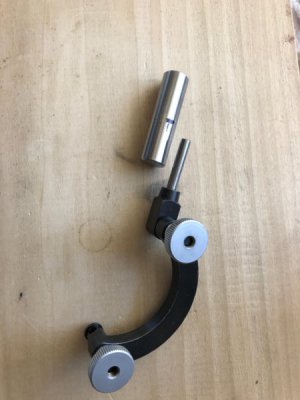- Joined
- Jul 20, 2014
- Messages
- 1,386
My head starts to swim a little when reading machinery's Handbook Fits section. I'm trying to get a a sliding fit for a tool holder where I want to add a 1/2" dia. shank to the existing 3/16" so I won't have to change collets as often. The .1865" dia. steel shank must fit into a .500" dia. tool steel round shank to be held with set screws.
I want to be able to get a nice sliding fit without play.
I will probably buy an appropriate reamer for this hole. Would a .1895" reamer work for the fit I'm looking for?
I hope to get the correct reamer size the first time. .1895 would give me .003" I'm wondering if this will be enough. I need to be able to remove the shaft.
The hole is blind, .625" deep. If I can get this right, I should be able to get a "piston" like fit. The shaft is hardened tool steel, very concentric, straight. The hole will be in a piece of 1/2" dia. annealed tool steel, O1. 1.2" Long.
I want to be able to get a nice sliding fit without play.
I will probably buy an appropriate reamer for this hole. Would a .1895" reamer work for the fit I'm looking for?
I hope to get the correct reamer size the first time. .1895 would give me .003" I'm wondering if this will be enough. I need to be able to remove the shaft.
The hole is blind, .625" deep. If I can get this right, I should be able to get a "piston" like fit. The shaft is hardened tool steel, very concentric, straight. The hole will be in a piece of 1/2" dia. annealed tool steel, O1. 1.2" Long.


 )
)